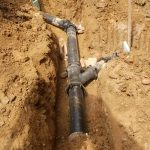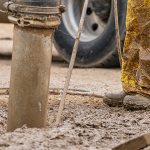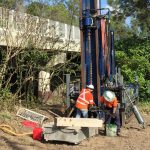PUP Underground Locating: Essential for Safe Excavation
Excavation is a necessary activity which ranges from large infrastructure projects to smaller residential works. However, digging without proper precautions can be extremely dangerous. Underground utilities, collectively known as Public Utility Plant (PUP), pose significant risks if struck during excavation. This article guides Australian property owners and contractors on the crucial importance of underground locating before any excavation work begins. Prioritising underground locating is essential for safety and preventing costly damage.
What is Public Utility Plant (PUP)?
Public Utility Plant (PUP) refers to the network of underground infrastructure that delivers essential services. This includes:
- Electricity cables
- Gas pipelines
- Water pipes
- Sewerage and drainage pipes
- Telecommunications cables
These utilities are buried at various depths, making pup underground locating vital for determining their exact location. Accurate underground locating is crucial for avoiding damage to these vital services.
The Dangers of Ignoring PUP Underground Locating
Failing to conduct underground locating before excavation can lead to severe consequences:
- Service disruptions affecting homes, businesses, and communities.
- Significant financial losses due to repair costs and potential legal action.
- Serious injuries or fatalities from striking high-voltage cables or gas pipelines.
Excavation work does present a high risk of serious injury or fatality, which underscores the importance of pup underground locating.
Legal Requirements for PUP Underground Locating in Australia
Australian legislation mandates specific safety procedures for excavation work. Each state and territory has its own regulations, generally aligned with the national Work Health and Safety (WHS) laws. These laws place obligations on anyone undertaking excavation to:
- Identify and assess hazards, including the presence of underground utilities.
- Implement control measures, including proper underground locating techniques.
- Contact Before You Dig Australia (BYDA).
Before You Dig Australia is a critical component of underground locating, providing essential information before any digging commences.
Before You Dig Australia (BYDA): The First Step in PUP Underground Locating
Before You Dig Australia (BYDA) is a free national referral service that provides information about underground infrastructure. Contacting BYDA before excavating is crucial for obtaining plans showing the approximate location of utilities. This is the first step in any pup underground locating process.
As stated on the BYDA website: “Any project… has potential to damage underground assets… leading to interruptions, delays, repairs, and in the worst-case scenario, injury or death. Obtaining information from BYDA… can significantly minimise these risks… BYDA should always be the first point of contact.”
This highlights the critical role of BYDA in underground locating. Also, it’s important to remember that BYDA plans are indicative and should not be the sole source of information for underground locating. Further investigation is always necessary.
Methods Used in PUP Underground Locating
Several methods are used for pup underground locating:
- Electromagnetic (EM) locating: This common method uses a transmitter and receiver to detect metallic utilities. EM locating is a standard practice in underground locating.
- Ground Penetrating Radar (GPR): GPR uses radar pulses to create subsurface images, detecting both metallic and non-metallic utilities. GPR is a valuable tool for underground locating.
- Vacuum excavation: This non-destructive digging method uses high-pressure water or air and a vacuum to expose utilities safely.
- Visual inspection: Examining existing infrastructure like pits and manholes can provide clues about utility locations. Visual inspection can support other pup underground locating methods.
The appropriate pup underground locating method depends on various factors, including utility type, soil conditions, and excavation depth.
Best Practices for Effective PUP Underground Locating
Following these best practices ensures effective underground locating:
- Always contact BYDA before starting any excavation.
- Use multiple locating methods for increased accuracy.
- Engage qualified and experienced locators like Aussie Hydro-Vac Services for professional underground locating services.
- Pothole or hand dig to verify utility locations before using mechanical equipment.
- Document all underground locating activities, including plans and markings.
Technology’s Role in PUP Underground Locating
Technological advancements have significantly improved underground locating:
- Improved EM equipment offers greater sensitivity and accuracy.
- Advanced GPR systems provide clearer subsurface images.
- GPS and mapping technologies create accurate utility maps.
These technologies enhance the precision and efficiency of underground locating processes.
In Conclusion
PUP underground locating is essential for safe excavation in Australia. By understanding the risks, following legal requirements, and implementing best practices, property owners and contractors can prevent accidents, protect infrastructure, and avoid costly disruptions. Contacting Before You Dig Australia is the essential first step, followed by employing professional underground locating. Prioritising underground locating is not only a legal obligation but a crucial responsibility for ensuring safety and successful project outcomes.
Contact Aussie Hydro-Vac Services
Planning excavation in Queensland? Don’t risk hitting underground utilities. Aussie Hydro-Vac Services specialises in safe and reliable PUP underground locating using a variety of methods. Contact us today on +61 7 3287 7818 or via our website for a free quote and ensure your project’s safety and success.
Related Posts

Subsurface Utility Engineering (SUE): Reducing Risk and Improving Projects
Construction and infrastructure projects across Australia face numerous challenges, from managing budgets and timelines to ensuring safety and minimising disruptions.
Read more
Non-Destructive Digging: The Safe and Efficient Way to Excavate
Traditional excavation methods, involving heavy machinery and extensive digging, often pose significant risks to underground utilities, the environment, and worker safety.
Read more
Geotechnical Investigation: Why You Need It for Your Road Project
Road construction is a complex undertaking that requires meticulous planning and execution, and one of the most important aspects of any successful road project is a thorough geotechnical investigation.
Read moreTalk with us today to find out more
Please call and speak with one of our friendly members of staff or send us an email using our contact form